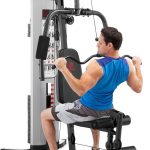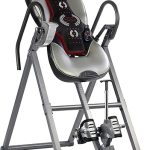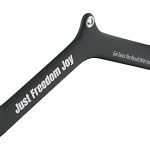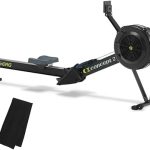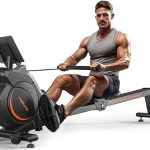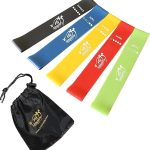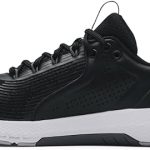When embarking on a hiking adventure, the right footwear can make all the difference between a joyful trek and an excruciating experience. Your hiking shoes are your closest ally on the trail, providing essential support and protection against the unpredictable nature of terrain. Investing time in choosing a well-fitted shoe is crucial for both comfort and safety. After all, blisters and aching feet can quickly turn a picturesque landscape into a painful ordeal.
But how do you find that perfect pair? It starts by understanding your unique foot type and the specific demands of your favorite landscapes. From arch support to cushioning options, various factors come into play when selecting hiking shoes that truly fit your needs. In this guide, we’ll walk you through the essentials of fitting hiking shoes so you can confidently hit the trails prepared for whatever adventures await you. Ready to discover what parameters matter most? Let’s dive in!
Understanding Your Foot Type
When it comes to finding the perfect hiking shoe, understanding your specific foot type is paramount. Feet typically fall into three categories: flat, neutral, and high arch. Flat feet often result in overpronation, where the arches collapse inward during walking or running. Conversely, those with high arches may underpronate—bone alignment becomes critical to avoid discomfort and injury. Neutral arches are more adaptable but still have their quirks requiring proper support to maintain balance during rugged climbs or lengthy treks.
Identifying your foot type starts with a simple wet test at home: step onto a piece of cardboard or paper after wetting your feet and take note of the imprint left behind. A flatter print indicates flat feet, minimal curvature signifies neutral arches, while a distinct curve suggests high arches. This quick assessment can guide you toward shoes equipped with the right level of support for your needs—like arch support for flat-footed individuals versus cushioned insoles beneficial for those with high arches.
Beyond basic shape, foot biomechanics significantly influence shoe performance on various terrains. The way you walk or run affects impact absorption and overall stability as you traverse uneven ground. For example, someone who excessively rolls their foot outward might need shoes that promote stability and control to prevent injuries like plantar fasciitis or ankle sprains. Understanding these nuances not only enhances comfort but also contributes to an enjoyable outdoor experience by minimizing fatigue over time.
As you embark on your search for ideal hiking footwear, remember that you’re looking for more than just style; you’re seeking functionality suited specifically to how your body moves through different environments. With this foundational knowledge of your foot type in hand, you’re already one step closer to discovering which pair will carry you safely through every adventure awaiting just around the bend!










Key Features to Consider
When selecting a hiking shoe, understanding the importance of arch support is crucial for ensuring comfort and preventing injury. Different foot types—flat, neutral, or high arch—demand varying levels of support. For example, individuals with flat feet may benefit from shoes that offer extra stability and motion control to help align their feet correctly during hikes. In contrast, those with high arches might need shoes that provide adequate cushioning and flexibility to absorb shock effectively while still allowing movement. Choosing a shoe tailored to your specific foot shape can make all the difference on long trails.
Toe room shouldn’t be overlooked either; it plays a significant role in overall comfort during treks. While selecting a hiking shoe, you want enough space in the toe box to accommodate natural toe splay without experiencing cramping or pressure points as you navigate varied terrain. It’s essential to perform simple tests: try wiggling your toes or sliding your foot forward until your toes lightly touch the front of the shoe. Ideally, there should be at least half an inch (or about a thumb’s width) between your longest toe and the end of the shoe—this will provide comfort when descending hills and traversing rocky paths.
Cushioning options also deserve consideration when choosing footwear for rugged adventures. Shoes come equipped with different types of cushioning technology—from EVA (Ethylene Vinyl Acetate) midsoles offering lightweight support to more structured models utilizing polyurethane for durability under heavy loads. For instance, if you’re planning day-long hikes with rigorous elevation changes, opting for shoes with enhanced cushioning can help reduce fatigue by absorbing impact throughout your journey. This not only keeps your feet comfortable but also allows you to focus on enjoying nature rather than battling discomfort.
With these key features in mind—arch support suited to your foot type, adequate toe room for unhindered movement, and smart cushioning choices—you are well on your way toward finding a hiking shoe that meets your unique needs and enhances every outdoor adventure! Each aspect contributes significantly to overall performance and satisfaction on the trail—all vital factors as you prepare for pursuits into nature’s breathtaking landscapes.
Sizing and Fit Guidelines
When it comes to finding the perfect hiking shoe, accurate measurements of your feet are crucial. Start by measuring both length and width to determine your true shoe size. Feet can change over time, especially with active lifestyles or weight fluctuations, so make a habit of measuring them periodically. To measure correctly, stand barefoot on a piece of paper and trace your foot’s outline. Mark the longest point from heel to toe and the widest part across the foot. This will give you essential insights into what size you may require in different brands, as sizing can vary significantly between manufacturers.
Half sizes may sound trivial, but they can make all the difference in achieving comfort for long hikes. Many people fall between whole sizes, and opting for a half size up or down can help avoid blisters caused by shoes that are too tight or inadequate support from shoes that are too loose. Additionally, discussing width options is equally important; many brands offer narrow, standard, and wide widths to accommodate diverse foot shapes. If you’re someone who naturally has a wider forefoot (common among hikers), seeking out styles that provide options for varying widths can enhance overall fit and prevent your toes from feeling squished during those critical descending moments on rugged terrain.
Another key factor is trying on hiking shoes with the socks you intend to wear while trekking. Not all socks are created equal—thicker merino wool socks will pad your foot differently than thinner synthetic ones, which may lead to fit discrepancies if tried with inappropriate footwear during fitting sessions. When trying on shoes, ensure you’re wearing these intended socks to truly gauge how snug or loose they feel around your arch and toe box as this drastically influences comfort levels during hikes. Pay particular attention to these nuances; after all, there’s nothing worse than being miles into your adventure only to discover those “just right” shoes turn out to be anything but comfortable once they’re on the trail!
Overall, investing time in properly sizing and fitting your hiking shoes ensures you’ll embark on each adventure comfortably equipped—ready to tackle new trails without concern about unnecessary discomfort slowing you down!
Testing Shoes: In-Store Tips
Finding the right hiking shoe is not just about having the correct size; it also involves evaluating how they feel under various conditions. When you’re in the store, take your time to walk around and genuinely assess comfort levels. This means more than a few casual steps—spend some minutes walking back and forth, mimicking the length of your future hikes. Pay attention to how the shoes feel on your feet at different speeds; whether you are strolling leisurely or picking up the pace for that uphill climb, comfort should remain consistent.
To further ensure you’re making an informed decision, try replicating actual hiking conditions within the store. Many retailers have inclined segments or ramps that simulate climbing terrains. Take advantage of this opportunity by stepping onto these inclines and declines to see how your new footwear handles changes in elevation. Notice if there’s adequate grip and support when transitioning from flat surfaces to slopes. This test can provide insights into how well they would perform during a real hike, especially on tougher trails where you might encounter rocky paths or steep hills.
As you move around, be vigilant for any hot spots or pressure points on your feet. These could indicate areas where the shoe does not fit properly or where irritation may occur over extended periods of use. It’s essential to notice these issues before making a purchase since discomfort during long hikes can dampen even the most exhilarating outdoor adventures. If you experience any pinching sensations or see signs of redness while trying different styles, it could be a sign that those particular shoes aren’t suitable for your unique foot shape.
Remember to take generic advice with a grain of salt—each hiker’s experience is unique based on personal preferences and biomechanics. A shoe that’s widely regarded as comfortable may not work for everyone due to varying foot shapes and sizes. So embrace experimentation! Your ideal pair is out there waiting for you, and taking these test-driving steps will help ensure you’ll find footwear that supports all your outdoor escapades with comfort and confidence.
Terrain Compatibility
Choosing the right hiking shoe goes beyond just finding a comfortable fit; it’s crucial to consider the terrain you’ll be traversing. Each environment presents unique challenges that can greatly influence your enjoyment and safety on the trail. For instance, if you’ll be navigating rocky trails or uneven surfaces, opting for shoes with reinforced toe caps and sturdy mid-soles will help protect your feet from sharp rocks while providing critical stability. Alternatively, when facing muddy or wet conditions, your best bet would be shoes equipped with aggressive tread patterns that ensure enhanced grip and traction, allowing you to confidently maneuver through slippery terrains.
The tread pattern on your hiking shoes plays a vital role in how well they perform in varying landscapes. Shoes designed with deeper lugs are perfect for loose, rugged paths; these lugs dig into soft ground for better stability and prevent slipping. On smooth trails, however, a shallower tread will suffice while offering comfort during extended walks. Think about the type of adventures you’re planning – whether it’s steep ascents, downhill descents, or gentle forest strolls – as this selection can make all the difference in maintaining both confidence and control.
Another essential aspect to consider is the material of your hiking shoes. If you’re venturing into humid or rainy climates where streams and puddles abound, waterproof materials like Gore-Tex can keep your feet dry and comfortable throughout your hike. However, breathability becomes much more critical in warmer environments; shoes made from mesh materials allow sweat to escape while still providing enough support for long-distance trekking. Likewise, hybrid options exist that balance waterproof capabilities with ventilation features—ideal for days when weather conditions fluctuate unexpectedly.
In summary, understanding how terrain influences shoe performance will empower you to choose footwear tailored to specific adventures. By thoughtfully matching shoe features like tread patterns and materials to the hiking environments you plan to explore, you’re not only optimizing comfort but also enhancing safety on every step of your journey. So before lacing up for that next great outdoor escapade, take a moment to reflect on where you’re headed; it could lead you one step closer to finding that ideal hiking companion!
Trying Different Styles and Brands
When it comes to finding your perfect hiking shoe, flexibility is key. With a plethora of brands renowned for their quality hiking footwear—like Merrell, Salomon, and Keen—you might be tempted to stick with what you know. However, expanding your horizons by experimenting with different styles can unveil pairs that offer unmatched comfort and performance. Each brand has its unique philosophy in crafting shoes, which often leads to variations in fit and functionality. Having the courage to try on a range of options not only aids in understanding your preferences but also enhances your overall hiking experience.
Exploring various styles is equally important as not every hike warrants the same type of shoe. For instance, trail runners are popular choices for fast-paced hikes or those who prefer a lighter feel on their feet. They provide ample breathability and flexibility while maintaining a solid grip on uneven surfaces. Conversely, traditional boots are designed for heavier loads and challenging terrains; they offer robust ankle support and endurance against rugged landscapes. By testing both types during the fitting phase, you can establish which aligns best with your hiking habits or even decide to incorporate multiple options into your gear repertoire.
Before committing to a purchase, it’s wise to read reviews from fellow outdoors enthusiasts as well as expert recommendations available online. These insights often provide practical feedback regarding durability, comfort levels during long treks, and how a particular model performs under various conditions—information that simply can’t be acquired through trial-and-error alone in-store. Websites dedicated to outdoor gear often feature user reviews alongside professional evaluations from outdoor specialists who understand the intricacies of foot mechanics in relation to nature’s unpredictability. Take advantage of these resources; they can serve as invaluable guides in making an informed choice.
In conclusion, stepping outside conventional paths when looking for a hiking shoe can lead you on an adventure all its own! Remember that the right footwear can enhance both performance and enjoyment while exploring our beautiful trails. Venture forth confidently by broadening your search across differing brands and styles—your feet will thank you when they’re comfortably nestled in shoes suited perfectly for each new outing!
Maintenance & Longevity Tips
To get the most out of your hiking shoes, proper maintenance is essential. Just like any gear you invest in for your outdoor adventures, regular care can significantly prolong their lifespan and ensure optimal performance on the trails. Start by giving them a thorough cleaning after each hike. For synthetic materials, simply rinse off dirt with water and use a soft brush to scrub away stubborn stains. If your shoes are made from leather, consider using a specialized cleaner designed for leather footwear to avoid damaging the material while maintaining its natural oils.
Drying your shoes correctly is just as crucial as cleaning them. After exposure to mud or water, make sure to let them dry naturally at room temperature; never toss them in the dryer or place them near direct heat sources, as this can warp and dehydrate both leather and synthetic materials. Insert crumpled newspaper inside to help absorb moisture and maintain shape. Additionally, treating your leather hiking shoes with a waterproofing spray can protect against rain and creek crossings while making it easier to wipe off dirt.
Even with diligence in maintenance, every pair of hiking shoes has an expiration date based on usage patterns and terrain types encountered. Pay attention to signs indicating it might be time for an upgrade: if you notice noticeable wear on the soles or lack of grip during hikes that would previously feel secure, those could signal potential safety issues down the line. Unusual creaking noises may indicate structural failures within shoe components—a sign they should be replaced sooner rather than later.
Being proactive about inspecting your footwear extends beyond aesthetics; good maintenance practices mean fewer injuries and discomforts on adventurous journeys! By keeping up with care routines and replacing your shoes when necessary, you’ll always be ready to hit the trails confidently—disregarding broken-down gear along the way!
Common Mistakes to Avoid When Fitting Shoes
Selecting the right hiking shoe can sometimes feel overwhelming, but being aware of common fitting mistakes can simplify the process. One frequent error that hikers make is overlooking sock thickness when trying on shoes. During a fitting session, it’s essential to wear the same type of socks you plan to use on your hikes, whether they are lightweight liners or thick wool socks. For instance, if you test your shoes with thin cotton socks and later hike in thicker merino wool options, you might find your boots feeling too snug and causing discomfort or blisters on the trail.
Another mistake lies in disregarding personal preferences for flexibility versus stiffness in shoe construction. Some adventurers prefer a more rigid boot that provides superior ankle support and stability on rocky terrain, while others may opt for flexible shoes that mimic a more natural foot movement. It’s vital to reflect on your usual hiking style and comfort levels; if you’re someone who prefers quick-paced trails and greater agility in your footing, insist on testing shoes with varied stiffness levels until you find what suits you best.
Lastly, many shoppers fall prey to letting aesthetics sway their decision over practical needs. While a stylish design might catch your eye, it’s important not to compromise function for fashion—an attractive shoe that lacks crucial support features could result in poor performance during energetic hikes or worse injuries over time. A practical example would be choosing a brightly colored shoe with minimal arch support; despite its visual appeal, without proper support tailored for your foot type, this choice could lead to foot fatigue during long treks or uneven surfaces.
Avoiding these common pitfalls will significantly enhance your chances of selecting a perfect pair of hiking shoes that offer both comfort and functionality. By focusing on fit rather than fad, and ensuring the enhancements align closely with your specific needs and adventure goals, you’ll be well-prepared for countless miles of exploration ahead!
Step Into Your Next Adventure
Finding the right hiking shoe is crucial for your comfort and safety on the trails. A well-fitted shoe can enhance your experience, allowing you to focus on the beauty of nature rather than discomfort. As you explore different options, remember to consider your unique foot type and individual needs. This thoughtful approach will make a significant difference in your hiking journey.
Now that you’re equipped with the knowledge to choose wisely, it’s time to take action. Embrace adventure with confidence in your gear choices! Whether you’re tackling rugged peaks or leisurely forest paths, finding the perfect footwear sets the stage for unforgettable adventures ahead. Happy hiking!

